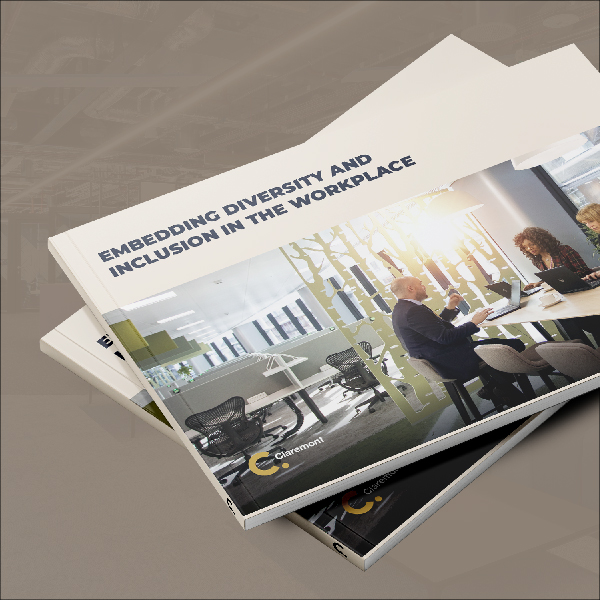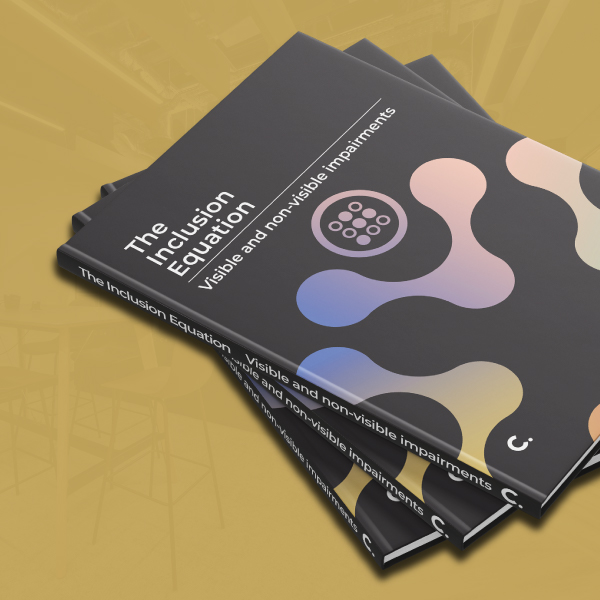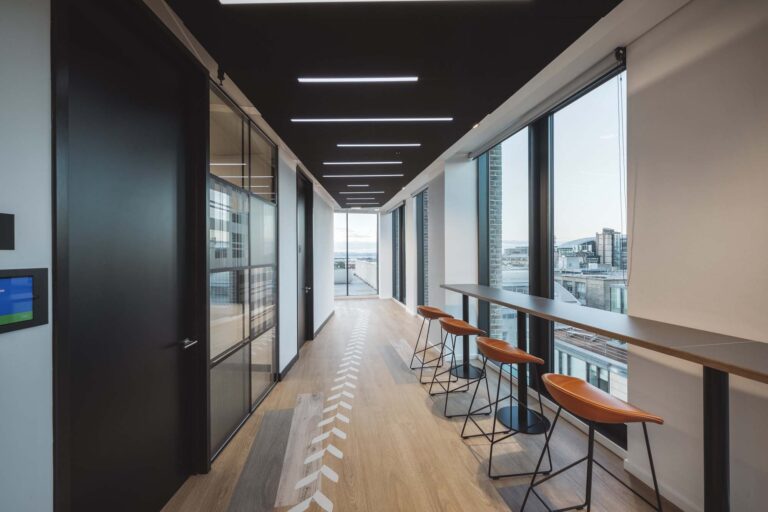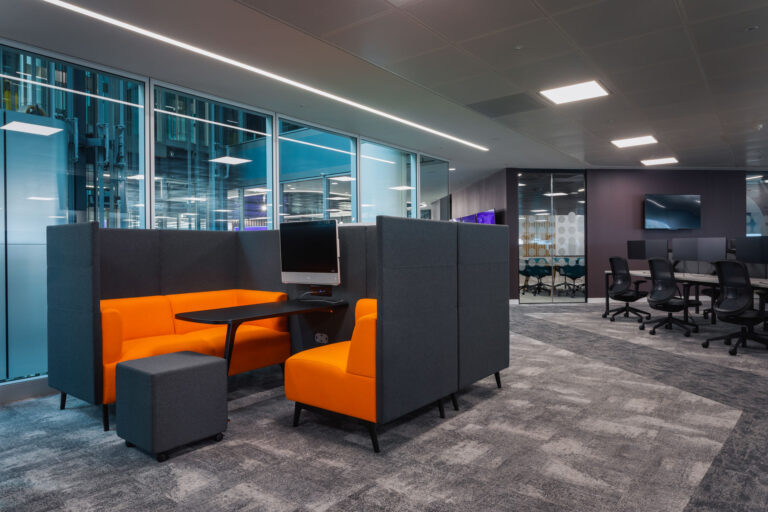
The office through the lens of disability: More than meets the eye
Date
1 April 2025
Read length
6 min
Diversity and inclusion are two of the most significant drivers of workplace change – as employers finally recognise the importance of reaching all parts of the talent pool and allowing everyone – whatever their gender, neurotype, faith, or physical needs – to thrive.
But are UK workplaces inclusive enough to meet the varied needs of those living with a disability?
More than meets the eye
Nearly a quarter of people in the UK have some sort of disability yet the majority (70-80%) of these are what are deemed to be hidden disabilities. Disability is more than something you can see and yet so often the workplace does not consider this.
The modern workplace places great focus on empowering employees through clever design and facilities. Yet often this doesn’t reflect the needs of those with disabilities. While an accessible toilet, widened doors, or height-adjustable desks will make the workplace inclusive for some it still isn’t considering the majority of those with invisible disabilities. This vast group of talented people need a workplace that is designed to empower them and allow them to thrive!
Here’s 11 ways you can build inclusion and longevity into your workplace!
1. Think holistically
Be sure to consider how those with disabilities will use the whole workplace. Every part of the workplace experience needs to be looked at from building access to movement through the building to shared facilities. Clever design allowing access to all facilities and amenities and clear signage to help navigate your space are all essentials to catering to a broad spectrum of needs.
2. Equity rather than equality
A shift in mindset from equality to equity is crucial in building inclusivity in the workplace. Thinking equity means making things fair and providing resources to support relative to each individual and the circumstances.
3. Surface levels
Incorporating a variety of surface levels throughout your office space, from desks to kitchens to bathrooms, that allow all employees easy access to workspaces without compromise is essential.
4. Workplace flow
Efficient workplace flow allows ease of access for anyone looking to navigate the office. Push-release buttons on doors, wide circulation routes with comfortable turning circles, and space between desks are all considerations that are often overlooked and yet by including them you can make a real difference to your space.
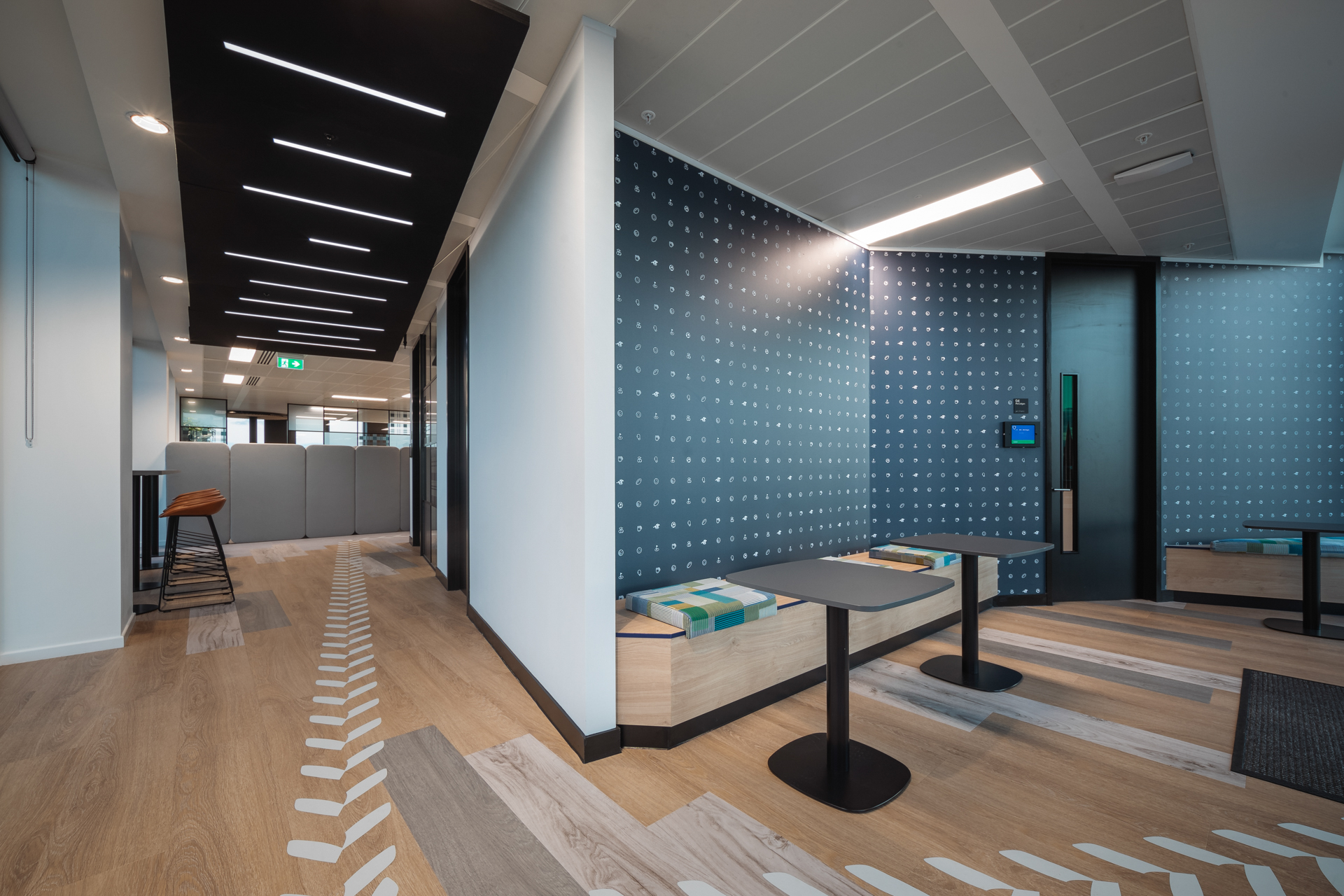
5. Colour and pattern
Colour is key to any workplace design but the choice is also key to helping make a space more inclusive. Good colour contrast benefits those with visual impairments, while neurodivergent employees may benefit from fewer visual stimuli to help with concentration. Getting your balance of colours right will go a long way to creating an inclusive space for your team.
6. Wayfinding
Wayfinding signage that includes Braille or raised lettering aids navigation, particularly outside meeting rooms and at desk numbers linked to booking systems. This is another area where good colour contrast and font helps to aid those who are visually impaired.
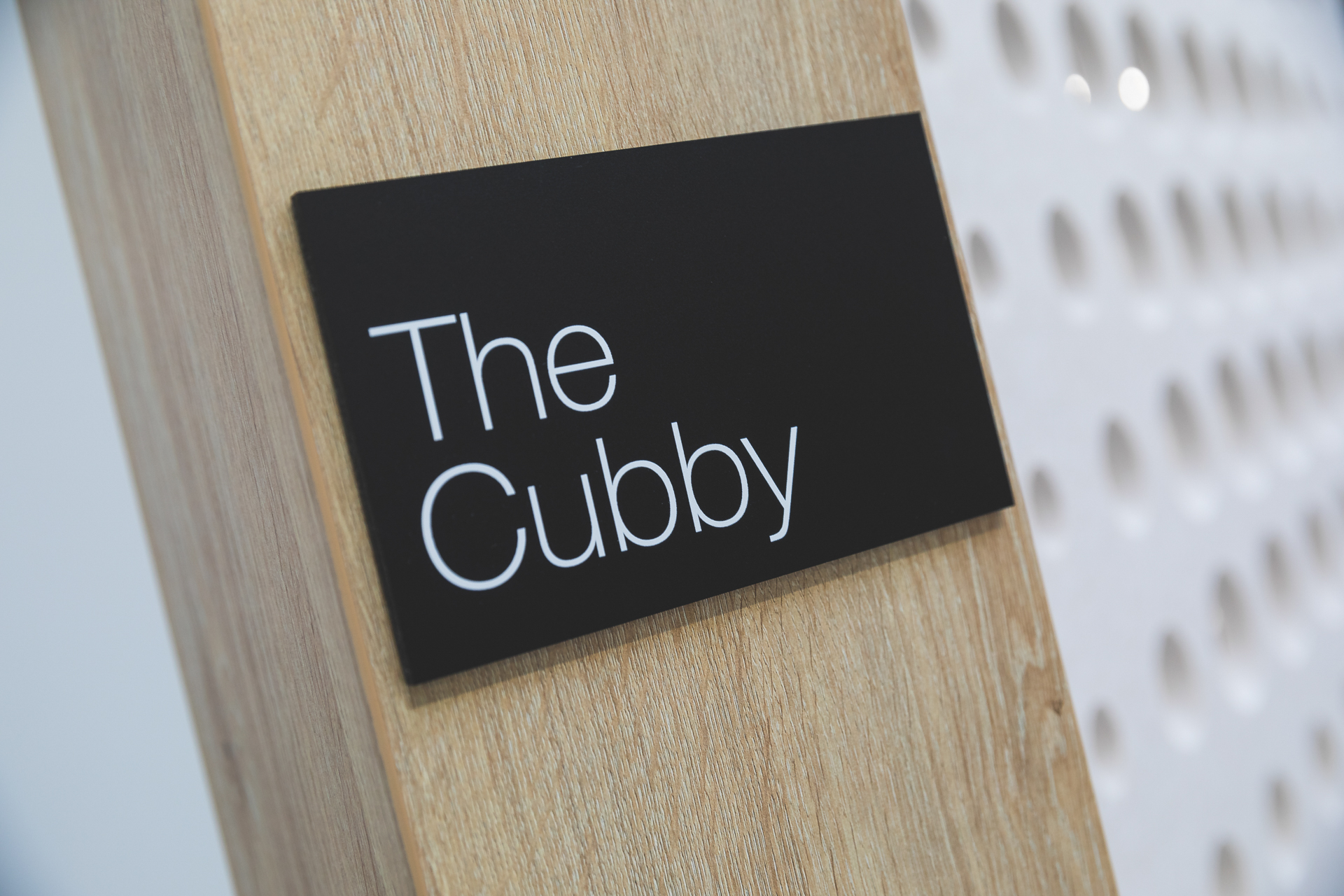
7. Lighting
Various different disabilities require various things from lighting. Some with visual impairments may be light-sensitive and need darker spaces whereas those with hearing loss may need a bright space to facilitate lip-reading. Lighting that reflects circadian rhythms can also be beneficial to people suffering from fatigue.
8. Acoustics
Soft furnishings are something that should be considered in any office design to help dampen noise. This may be simple things such as carpets, rubber caps on furniture, and acoustic panels, or implementing hearing loops in meeting rooms and collaboration spaces.
9. Specifying inclusive products
Inclusive products are paramount in creating spaces that cater to diverse needs. This includes features like pods that are seamlessly flush to the floor and equipped with electronic push-release doors. Booths and collaboration spaces with cut-out spaces are also a great way of ensuring that all can participate be it a wheelchair, a guide-dog, or something else.
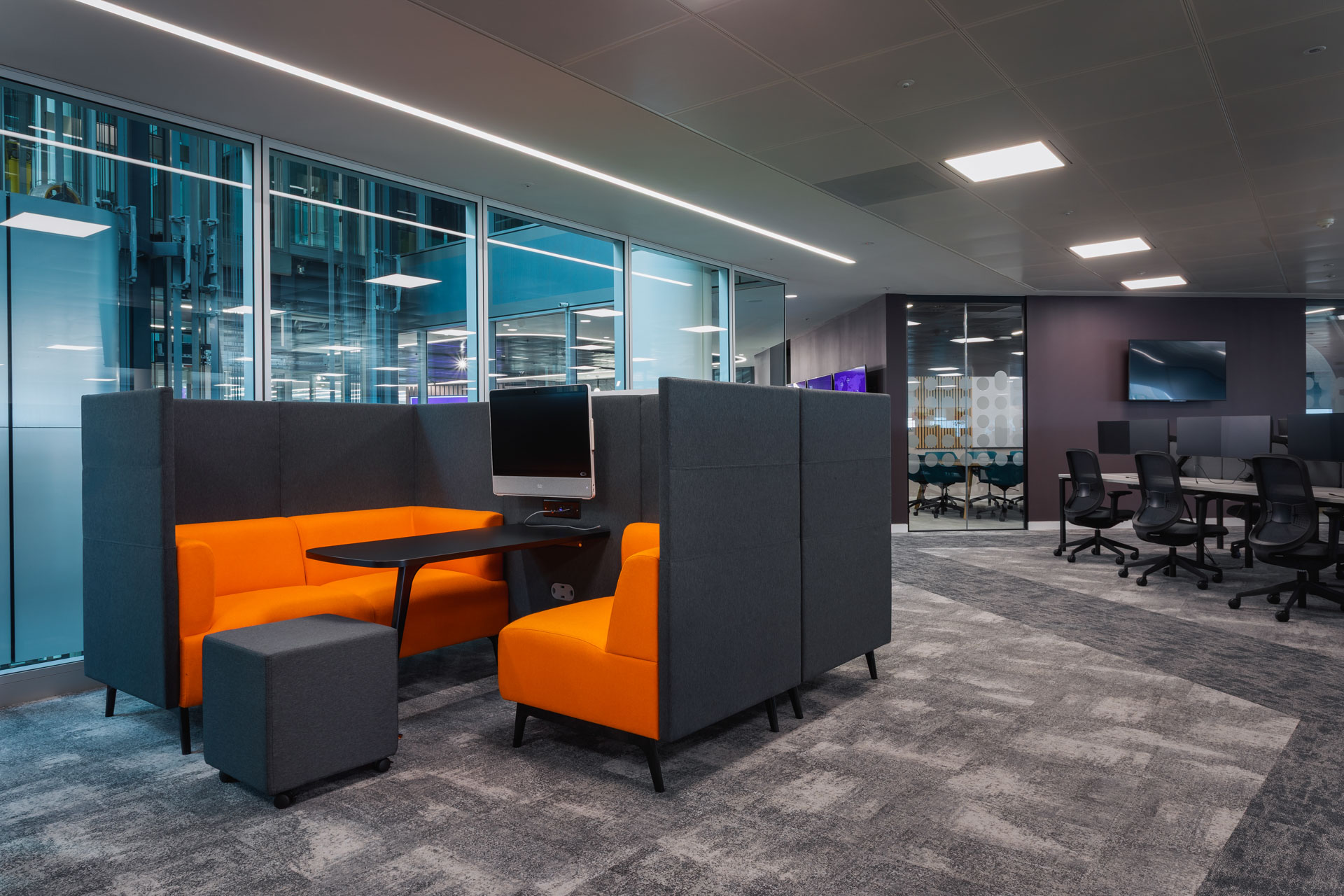
10. Moveable furniture
Adjustable furniture that can be moved and adapted to the needs of all employees is important in making sure all employees feel comfortable and ensuring parity. Choice aids inclusion.
11. Wellbeing
Wellbeing rooms offer employees a space that is private and discreet when they need a moment to themselves. From an inclusive perspective these spaces are great for those with a disability, they offer a private place for administering medicine, general rest, virtual medical appointments, or simply a moment for recovery. These space should comfortable and welcoming not merely a tick box exercise.
How are we doing our part?
Inclusive design ensures that workplaces provide employees with a space that makes them feel empowered no matter their circumstances. It gives employees who may previously have felt disregarded a platform to shine and maximise their potential. At Claremont we ensure that all our spaces factor through a rigorous design audit, using our DIBE360 tool, to provide you with a percentage score and analysis on how inclusive and accessible your new workplace design is for those with a disability as well as other indicators of inclusion. For more on how we’re tackling this issue read our Inclusion Equation series and start your journey to a workplace that empowers your team!
For more from Becky on this topic read the article in full over at TomorrowFM!
See how we could help with your new office interior design or office design and build project here
Get in touch
We love nothing better than talking all things workplace and design – got a question, potential project or just need some guidance?
Drop us a note…


